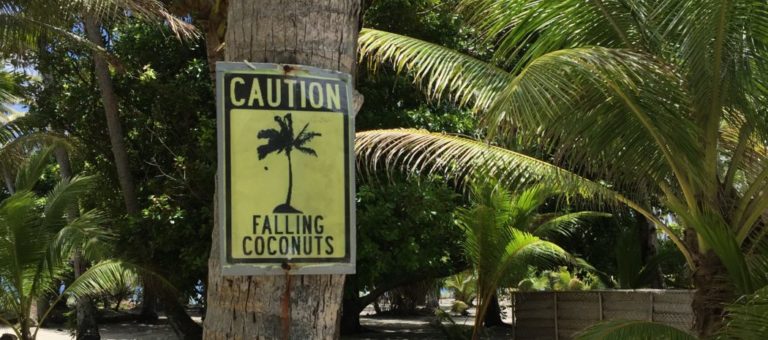French Polynesia is comprised of several sets of islands. These include: the Society, Marquesas, Gambier, Austral, and Tuamotu Islands. Each set is a string of islands related geologically and referred to as an archipelago.
The island of Tahiti is the principle island of the Society Islands and of French Polynesia as a whole. Your cruise will be roundtrip Papeete, Tahiti, as it has the only major international airport of the islands.

If you are on a seven-day cruise, you will stick to the Society Islands. These are the heavy hitters like Tahiti, Raiatea, Bora Bora, Moorea, and Huahine. If you are taking a 10 or 11-day cruise, you will also visit the principle “atolls” of the Tuamotu group, Fakarava and Rangiroa. By the end of this article you will understand why I strongly recommend the longer cruise.
The Society Islands are dormant volcanoes sticking out of the water, ringed by coral reefs that create stunning lagoons surrounding most of the islands. See the Google Earth image of Bora Bora, Raiatea, and Huahine.
If you have been to the Caribbean or Hawaii, you have visited beautiful islands often described as Paradise. They are also volcanic islands sticking out of the water. While some have coral reefs, they do not have the encircling reef lagoons of French Polynesia. Check out the Google Earth images of St. Thomas and Maui.
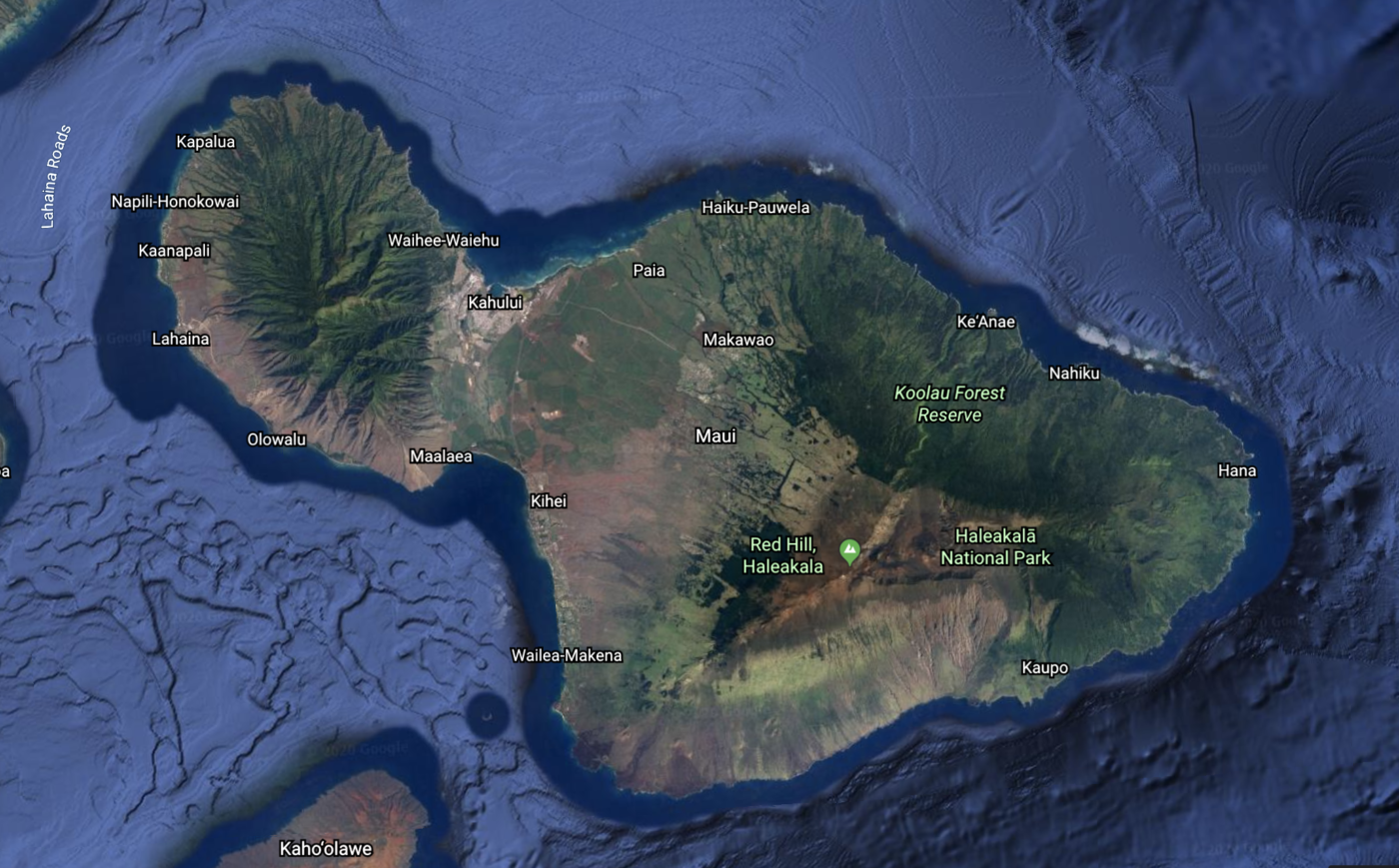
All of these volcanic islands are the results of different kinds of tectonic plate action. Hawaii and French Polynesia are the result of “hot spots” in the Pacific floor. Molten magma comes up through a weak point in the Earth’s crust and builds a volcano that eventually grows above the surface of the water. We see this action today on the Big Island of Hawaii where the hot spot is still active as Kilauea volcano. Roadside Geology of Hawaii
The Big Island also has two other craters, Mauna Kea and Mauna Loa. They are further from the hot spot and dormant enough that we build observatories on top of them. In fact, the rest of the Hawaiian Islands, stretching west from the Big Island were once volcanoes over the hot spot. Over time, the continental plate they are on drifted away from the hot spot and they cooled.
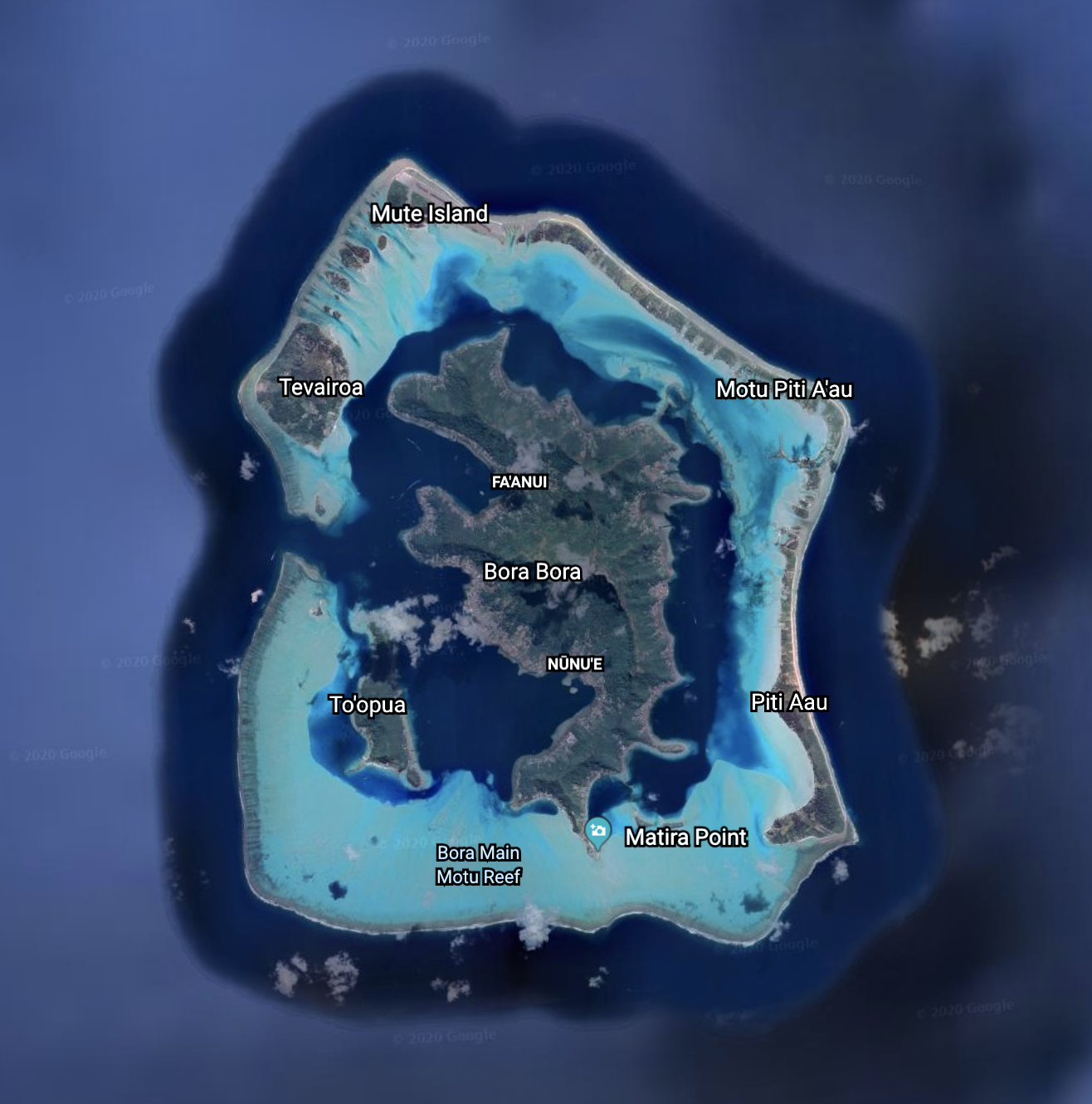
When an island cools, two things happen. First, the island creates rain, which begins to erode the island. We see this in the constant showers and waterfalls of tropical islands. It is something we can observe in canyons and valleys. Kauai is the rainiest spot in the US.
In the second process, believe it or not, the cooler mass of volcanic rock becomes heavier and slowly sinks. Over a time period we cannot perceive, the island pushes down on its continental plate and sinks below the waves.
Google Earth projects the topography of the ocean floor. If you follow the Hawaiian archipelago further west of Kauai, you will see dark blue “lakes” in the middle of the Pacific Ocean. These are the remains of islands that were once formed by hot spots and that have sunk and eroded over time until they are no longer above water.
Many of these former islands have no traces above sea level. So, they are not part of our perceived world. Nobody talks about the “sunken Hawaiian Islands”. We don’t give them names. They don’t show up on maps unless there is some remaining promontory that still sticks up out of the water. Out of sight, out of mind, they do not alert us to this multi-million-year natural action.
Now, look at the Society Islands. You can see the volcanoes sticking out of the water. The difference here is that you also see the reef and the lagoon. The lagoons are shallow. In Bora Bora, we took a boat ride out a quarter of a mile from the shore of the island, about 100 yards from the reef, and we were standing in water four feet deep.
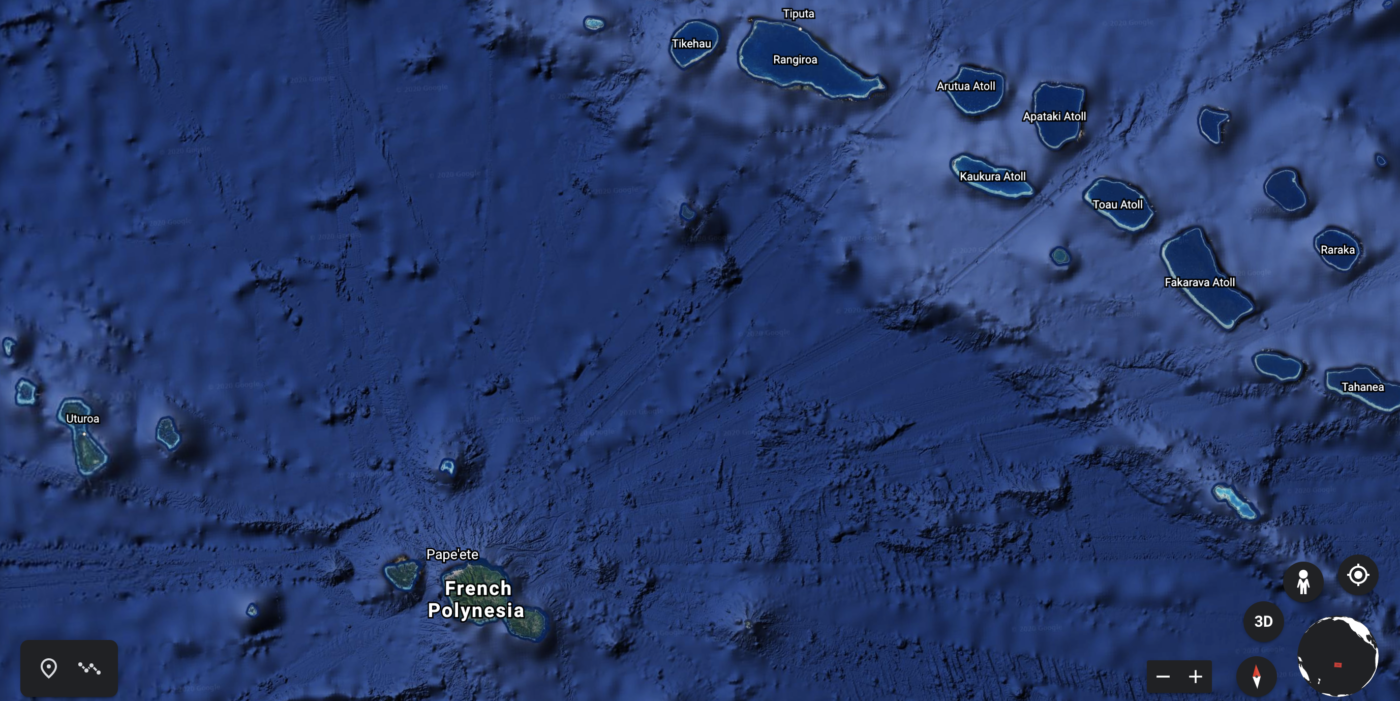
What we are witnessing here is the snapshot of an island in the process of eroding, growing cooler and heavier, and sinking. The island used to be the same circumference as the coral reef. The reef actually grew along the edge of the island. Then, the island became smaller and smaller, while the reef, a living organism, stayed in place. This created the lagoon between the island and the reef. Slowly, another unique ecosystem was born.
This is briefly described by US astronaut, Kathryn D. Sullivan, in her internet slide show about viewing Earth from space. It is slide number 8. She describes this theory, first attributed to Charles Darwin, and illustrates it with her photo from outer space, https://www.lpi.usra.edu/publications/slidesets/geology/sgeo/slide_08.html.
Darwin’s remarkable insights were first published in 1842, as “On the Structure and Distribution of Coral Reefs,” shown on the Internet for those who would like to see the words of the master, himself, https://archive.org/details/onstructuredistr00darwuoft/page/n5/mode/2up.
Someday, long into the future, the island will be gone and only the reef and its lagoon will remain, smack in the middle of the Pacific Ocean. How do we know? Visit the Tuamotu’s. When you visit Fakarava and Rangiroa, you are visiting the remaining coral reef. There is no longer any island. This is the “atoll”, the reef left after the island has disappeared.
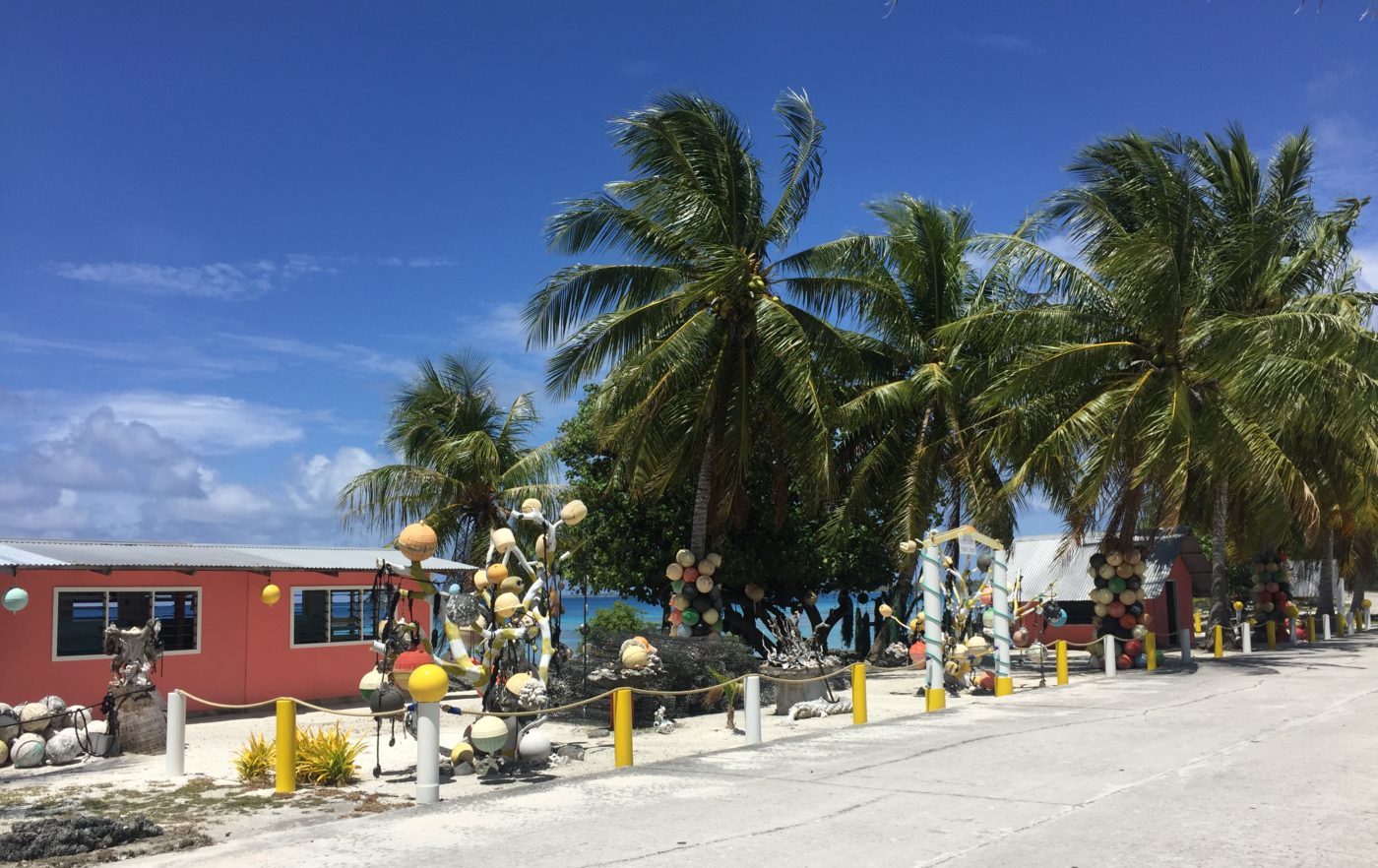
The Rangiroa Atoll is so large that you can stand on one end of it and, because of the curvature of the Earth, you will not see the other end of the atoll. Once upon a time, the whole interior space of the atoll was taken up by a large volcanic island. The double volcano island of Tahiti would easily fit inside the Rangiroa atoll. Rangiroa Island must have once been quite majestic, and now, it is gone.
Here, in the middle of the Pacific, by paying attention to the different island configurations of volcanos, reefs, and lagoons, you can actually see Mother Earth living and breathing. It is one of the most exciting aspects of a cruise in Polynesia.

